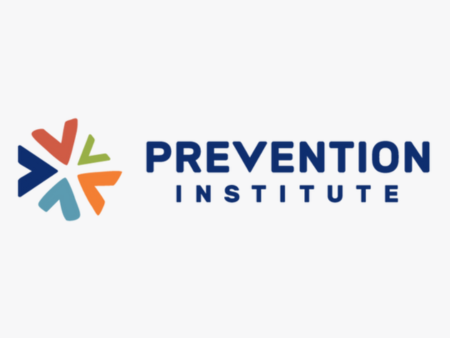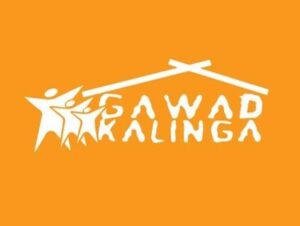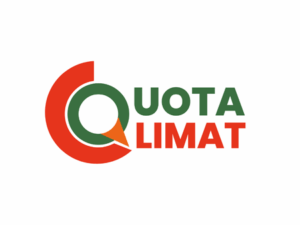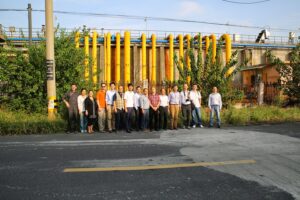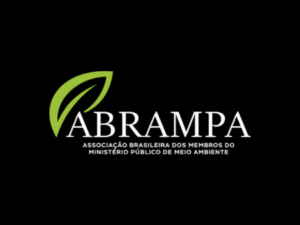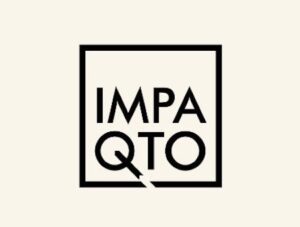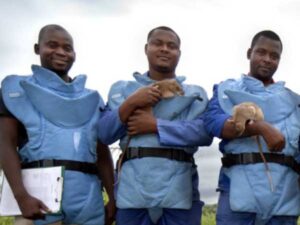Prevention Institute works to improve community health and health equity through effective primary prevention and by advocating for prevention and health equity to be built into key policies and actions at the federal, state, local, and organizational levels.
La’Quana Williams of Prevention Institute spoke with Ashley Hopkinson on December 7, 2023. Click here to read the full conversation with insights highlighted.
Ashley Hopkinson: Can you start by introducing yourself and your organization? What problem are you working to solve?
La’Quana Williams: Hi. I am La’Quana Williams. I’m an associate program director with Prevention Institute, based out of our LA office in Leimert Park.
Prevention Institute (PI) is a national nonprofit, and our specific focus has always been public health and health equity. True to the many experiences in the public health field, we have been on a journey of better understanding what health equity means. That trajectory has taken us toward an understanding of how to better incorporate and lift up the work of racial justice organizations and social justice organizations that are advancing the work of public health. Essentially, that has been a call back to the roots of public health as a discipline, in a way that allows us to look at social issues, not necessarily social justice issues, but social issues as a whole.
The work we do at Prevention Institute is divided among a number of different core public health issue areas. We work around safety and well-being, we do mental health work, and we engage with more run-of-the-mill public health efforts around things like park equity. What undergirds all of that work is the strong focus on how to better advance health equity through the work of racial justice. That’s the work I get to do here at PI.
Ashley Hopkinson: What makes the work that you do distinctive from other organizations that are working in the public health space to create change and health equity?
La’Quana Williams: Prevention Institute has created opportunities to work alongside local government, statewide government, and obviously the CDC, so we have some trusted and valued partners in those spaces. That’s really where we’ve done the gamut of our work in our 20-something years. In more recent times, we have been working more intentionally to be conveners and stakeholders of the work that’s happening a little bit closer to the ground. That’s not necessarily to do away with the other work, it’s just to say that there are some other areas where it’s really important to us to make major contributions. Our partners look a little different now, and I think that diversity in partnerships is super important. It’s going to help us to continue to advance the work we are attempting to do.
Given that, what also makes us unique is that we see ourselves playing this role where we are leveraging our research and efforts around health equity and racial justice with local government agencies in a way that also lifts up and holds up the work that the communities are doing to advance it externally. I think that’s a pretty unique and distinctive role. We’re still finding our footing in it. We’re not a racial justice organization, and we don’t pretend to be, but we have some contributions to make based on the work we do in public health. It’s been a give-and-take to understand how we enter into these spaces, and where we back up a bit.
Ashley Hopkinson: You work with many different levels of organizations. The CDC has a national, even global reach, and local government agencies that are working within specific communities might have different needs. Who, then, are the primary beneficiaries of your work?
La’Quana Williams: We are always asking ourselves this question. Traditionally, I think the work has mostly benefited those working in local government. We’re able to provide them with tools, resources, and facilitation, whatever they need. We have a number of different offerings, and those have traditionally gone to leadership and staff who work in local city government agencies. Now what we’re doing is making sure there are also offerings that assist other community-based organizations in advancing their work. I’ll give you an example.
Right now I’m working on a project that looks at the history of social movements as it relates to public health. What we’re finding is that this work of course helps local government agencies to recognize that they’re not doing the work alone, and that there are always outside agencies pushing the work. It also shines this important light on those Congressional Budget Offices who are doing the work, regardless of what the government is doing. Whether there’s funding or not, whether there are champions, whether political stuff is going on that impedes the work, it doesn’t matter. That work is still happening in local communities. What we’re striving to do now is of course remain consistent with our broader audience, but also build a bigger tent that allows others to work alongside us and see themselves as part of the change in public health.
Ashley Hopkinson: What would you say is a metric for how the organization measures success? How do you know you’re moving toward these goals that you’ve set for yourself?
La’Quana Williams: There are a couple of different ways we measure success. As a nonprofit, getting grant-funded work is one. In terms of objectives and deliverables, there are certain metrics or deliverables that we absolutely have to meet in order to show change in the work. Those are pretty typical. You could talk to a number of different organizations and get that type of information. But one thing that we are finding now when seeking funding or resources from a multitude of different agencies is that some of them are becoming a bit more flexible in the ways that we’re able to utilize the resources that come in.
As we’ve been able to get some core support funding, which allows us to be innovative and free in the work that we do, we’ve been trying to track some of our internal growth around these issues. How do we make sure that we are bringing in-service training for ourselves, and how do we make sure that we are attracting and retaining the type of staff that we want? How do we make sure that administratively we’re being competitive within the market? Those are some internal-facing aspects of that work. Externally, it is really about building a broader network and leveraging our partnerships. That’s something we’ve been able to see really grow and transpire over the last few years.
We have this project right now in our Houston office, where we are training 1300 staff members around embedding equity practices. We’re getting calls from other places around the country who are saying, “We’d love to train all of our staff as well.” It’s things like that where we’re able to see that we can do this work in a city like Houston, a blue city in a red state. It’s not so scary after all. There are some policy advancement wins, and some pushback too, but that doesn’t mean the work ends. Those are some of the ways we are able to measure our progress and sustainability over time.
Ashley Hopkinson: I imagine that as a public health organization, you guys have a lot of insights from 2020. Do you have any takeaways from 2020, or from any other time that somebody else can learn from?
La’Quana Williams: That’s an excellent question because there are still so many learnings that are coming out of that time period, and we still have funding that supports us in better understanding what declarations around racism being declared a public health crisis across the country meant. There are over 200 of those declarations. For those of us who have been in public health for a while, we recognize that the pendulum swings in a lot of different ways. Sometimes there are slow lulls, and then other times there’s this big momentum, and we are pushed to get the work out there.
I think 2020 was, in some ways, one of the years that we’ve been waiting for. Unfortunately, that momentum came at the hands of the death of a black man. So as much as we were able to see advances in the work around public health, it was really difficult to separate out what was happening because of true energy and efforts around racial justice and health equity work, and what was a response to the COVID-19 pandemic.
So many learnings came out of that. There are better partnerships, and there’s more funding, which helps with sustainability. There’s more narrative- and power-sharing. We did lots of research on that. We studied it, and those were some of the things that we were hearing. At the same time, we were asking: Can we truly distill this from the fact that cities, counties, and governments are receiving money to do this work in response to the pandemic?
There’s a lot to unpack there, but I think essentially what we’ve learned is that there’s so much more work to be done, and public health as a discipline has to be doing that work outside of a crisis. We must continuously push the work, and we need to be better partners with other agencies that impact the health and lives of individuals and communities on a day-to-day basis.
Ashley Hopkinson: If you’re talking to people in the public health space, what would you share as something you did that worked and that could be valuable to someone else?
La’Quana Williams: We recognized that it wasn’t necessarily the time to have all of the answers. People often look to Prevention Institute to have the answer and develop a framework, to tell them exactly what they should do, to offer a playbook. We’re used to being on the cutting edge of that, and many of us internally felt, let’s slow it down. Let’s figure out what we know, and it doesn’t have to be fully baked. We don’t have to say, this is tried and true, and it’s proven everywhere we go. It could simply be, based on the information we have, this is what we know now, and this is the direction we are moving in.
I’ve been talking about internal and external approaches, but even more importantly, it was part of our internal approach to ask: How can we put something out into the world that allows us to show what we’ve been learning and what we’re still unsure about? We used some funding we received from the Kellogg Foundation to develop a series that looked at the intersection of health equity and racial justice in that time period. It was all virtual, we did it all online, and we got to convene with external partners and our internal colleagues to peel back the curtain and show we don’t have it all figured out, but we are committed to being part of the journey to learn what all of this means for each of us.
Ashley Hopkinson: I think everyone learns as much from things that go well as they do from things that don’t go so well. Has there been anything that you tried to implement that didn’t work, or didn’t meet your expectations, and that taught you an important lesson? How did you solve that challenge, or what have you learned that made the next endeavor better?
La’Quana Williams: We try to put a positive spin on most things and say, “Here’s what we learned in the hard spaces.” I shared some of that when I talked about how we had to slow the work down and be in a space that makes sense for us as a public health organization engaged in racial justice work. That’s been a space that we’ve been entering into with great care, especially as a white-led organization. Coming into spaces where folks have been doing this work for some time and being methodical about unpacking who we are as an organization, what our makeup is, and what that means as we put it out there into the world per se.
We realized that we needed to create broader opportunities for others to be part of our work. We needed to create more consistency around who we were talking to and who we wanted to be talking to, so it was no longer just the old players who constantly came to our website asking, “What new tools and resources does PI have?” but the folks who had no idea what we do. We have a great track record and we have been an excellent partner in so many realms, and that goes a long way, but it doesn’t make up for the fact that there are still people we are not reaching.
We’ve been working to leverage our efforts around how to tell the story of our organization and its work, and also the work of public health. How do we build narrative power within communities so that they can tell their own stories? We’ve also been working to leverage our role in lifting up other community-based organizations. Finally, a big takeaway for us has been deciding who we are as an organization, and even more so, who we are not. Despite the fact that our work is typically largely grant-funded, some work is not in alignment with where we’re going. Some funding and some resources are not in alignment with who we see ourselves to be in five years or even currently. It’s required taking some extensive looks at who we want to partner with, and who we want to be associated with, and what that means for us for now and in the future.
Ashley Hopkinson: You were just talking about narrative power. Do you have a story you can share that illustrates the impact of Prevention Institute?
La’Quana Williams: We have quite a few projects right now that highlight our prevention work in a way that allows us some national attention and relationship building. A couple that come to mind are what we call communities of practice, where we essentially convene a number of community-based organizations around a particular topic. In the case that I’m speaking about now, it’s mostly around mental health and well-being work. We’re looking at a program called ATOPS Network, which works to assist those working in local government who are experiencing burnout and fatigue in doing health equity and racial justice work. How do we support them and make sure that they have what they need in order to continue the work?
Another example is from our P3 work, which is People, Parks, Power. This is another kind of national effort that convenes several community-based organizations across the country around parks in different locales. We have sites everywhere, and they’re learning what it looks like to build power and advocacy around making sure that people have access to green space.
I can probably best tell you about the work we do in Houston with the health department, where we’re training 1,300 of their staff members. What we built into that grant were some opportunities to look at what we’re calling deeper dives. We found that they were interested in the history of social movements, so we did a deeper dive into what that looks like in Houston, and of course nationally. They were also interested in environmental justice efforts, given some of the issues that black and brown communities have experienced in Houston. We’re able to partner with some local colleges and universities and have some block captains in the community come out and be the experts in that work. Our role is just to be conveners around the issue and facilitators of dialogue. This is their way of sharing what’s taking place in their communities.
Those deeper dives have been helpful, and we’ve tackled some tough conversations. One of the things that PI does really well as a convener and facilitator is not shying away from the tougher, more challenging conversations around policy issues. We engage with them and allow space for them to breathe. We can have those discussions without creating a fracture in the work or a fracture in the partnerships. We’ve held those with lots of fidelity.
Ashley Hopkinson: I can see PI working in the space of system change by having conversations around how we prevent crises from happening. Are there other things the institute is doing that are making a shift in the healthcare field? Where do you primarily see your role as a player in the field, making a difference? Is it leveraging those partnerships, or working toward policy change?
La’Quana Williams: I think it’s all of the things that you just named. What’s beautiful about the field, and I think PI does a great job of this as well, is we’re quite selfless in that we don’t think we’re the only ones that should be doing this type of work. This work requires that we build and maintain partnerships and learn the work of other fields, so we can make sure we’re speaking the same language and everyone can see the benefits and the wins around systemic change in public health. On this side of the field, we are extremely giving and welcoming in allowing others to be part of the work. The way we’ve been talking about this work over the last few years has been an ecosystem approach, which allows us to see where all of the different players exist and where the wins are.
It’s not entirely different from the way that public health has traditionally viewed itself. I think what is a little bit different here is that public health doesn’t need to be at the center of it all. We are not necessarily experts in all things. We are a phenomenal convener as a whole, but a public health agency doesn’t have to be at the center of the work. That ecosystem approach allows others to see themselves in the work of public health, even when they’re not calling it public health work, or when they don’t know they’re doing public health work, or recognize that they’re increasing life expectancy, or contributing to the bottom line of financial wellbeing. All of that, in turn, has health impacts. When they’re doing it, we’re calling it out. We’re saying, “That’s public health work.”
My hope is that the messaging around the role of public health, and what it is we do and don’t do, becomes clearer. As much as we view our work as preventative, we know that in times of crisis, we are quite reactive. In 2020, even though we knew who would suffer the worst and who would die faster and get sicker sooner, we were still scrambling. There’s so much more work to be done, and the role that we see ourselves taking is one that allows us to be a better partner across the board.
Ashley Hopkinson: What do you think is needed from other actors in the space, and other agencies and entities outside of healthcare, to advance systemic change?
La’Quana Williams: There are some real challenges with the messaging. Public health [often is not viewed as] a discipline. There is work that could be done to uplift the role public health plays outside of a crisis or traumatic event. That’s part of it. The other part is around advocacy for groups who’ve traditionally been left out of the work, who experience and carry some of the greatest burdens in our society. There’s work to ensure not only that there’s awareness and knowledge about the atrocities happening, but that there’s something we can do about it. So in the same way that we’ve created policies and norms around issues that perpetuate some of the health disparities we see in our communities, there are also ways we could reverse that, whether it’s through policy change or narrative work.
We’re no longer just working to build awareness around the issue, but to figure out how we can operationalize the work around health equity and racial justice, and what that means for each individual sector. It’s going to look different coming from public works than it looks coming from folks who work around safety issues. But if the basis gets us back to eradicating issues around discrimination and racial injustice, I think we’ll all fare a heck of a lot better. That’s been proven. It’s not just lofty thinking. If health equity practitioners and public health practitioners work alongside racial justice advocates, we could make some lasting and monumental changes.
Ashley Hopkinson: Aside from funding, are there any challenges you face in the sector, whether scalability or accessibility, or public perception, particularly when you’re trying to implement things in new cities or new places?
La’Quana Williams: Funding is always going to be challenging, but there’s one piece that I want to touch on and underscore, which is something I talked about earlier, and that’s how flexible we can be in utilizing funding. The flexibility to be innovative, to try new things, and to figure out what works and apply it to our internal learning has made a world of a difference in our health equity and racial justice work. I would love to highlight that and lift it up.
The other part is how we can create this space to have consistent and sustainable opportunities for growth in this area. There tend to be expectations of really quick wins. You’re going to come out of this and you’re going to give us the play-by-play of how all of this is supposed to work after you’ve done these 10 interviews, or after you’ve been in this community for X amount of time. This goes back to that sustainability piece. We don’t want to parachute into communities, then hop right out when the work is done. We’re looking at how we can leverage the work we’re already doing toward the benefit of other projects and opportunities, like looking at our work geographically, for instance, and making sure that there’s good geographical spread.
We’re a California-based organization, and we often get questions like: Why would you go to Texas? Nothing is ever going to change there. Yes, but we don’t want to keep preaching to the choir, either. Not that California is perfect by any means. There are so many ways in which we are taking an intentional look at the work we’re doing now and assessing where we want to be over the next decade or so. I hope that that lends itself well to the choices that we’re making. But it is very, very challenging to do the work of building those relationships and creating partnerships that have trust.
In some ways, we’re able to ride in on the great work that we’ve been doing for so long, which is a beautiful thing. In other ways, we have to [go in saying] this is what we’re trying to learn. This is what we are. This is how we want to grow. We don’t have it all figured out. We’re not going to put a bow on it and head out of here; we’re here to learn. Transparency, openness, and honesty have taken us far in the last few years, but not without challenges.
Ashley Hopkinson: What would you say inspires you? What keeps you optimistic and hopeful about being in the public health space and doing the work that you do every day?
La’Quana Williams: To be honest with you, I’m not always optimistic. I’m not always hopeful. During the pandemic, I was probably the most disenchanted with the field and with the work because I was in this space of, “We knew this was coming, and we knew where the fallout was going to be.” One of the things that keeps me grounded in this work is this recognition that it would be super pompous of me or anyone else to think that so much is going to change based on a project or based on one organization, despite how remarkable so many organizations are who are doing this work.
We have to be committed to this for the long haul. There’s this low and slow burn of the work that allows us to recognize that we are aiming towards a North Star that we probably won’t reach, but we will get an opportunity to give something to the folks coming behind us. That’s where I’ve kind of settled. In my 20s, I was like, let’s get this thing on the road. Let’s get it all done.
I still want to feel that hopeful, but I also recognize it’s not on me or any one organization to do all of that. If I hold onto that, I’m going to be extremely disappointed with how slow all of this moves. None of the disparities that we see were created in a generation or two. It’s been a long haul to get here, and it’s going to take probably just as long to double back on it. So what I’m holding onto now is being committed in the same way that social justice organizations and racial justice organizations are committed to moving the work forward to create incremental change. That allows me to remain as optimistic as I can be each day.
Ashley Hopkinson: That’s very honest, and I think that’s very true. Where do you see PI going in the next five years?
La’Quana Williams: Great question. I’m not at the highest level of leadership at PI, but my vision is that in the next five years, we will be in a space where we know ourselves well enough to be reflecting our values at the highest level externally, and practicing that internally as well. We are absorbing and participating in so much learning through the work we’re doing externally. We don’t always get the opportunity to turn that inward and say, “Okay, now that we know this, now that we’ve done the work of foraging and gathering information, here’s what we know to be true about ourselves. Here’s what we should be doing differently, and here’s where we could advance the work.”
I also want to see us solidify ourselves as a key player, not just in prevention, not just in equity, but in racial justice work. There are so many public health issues around environmental health. There’s the economic work, and there’s gender, but if we are centered on the work of racial justice, I think we’ll be better able and better equipped to spread our fingers into all of the different areas that we already work in. Right now, we’re doing a great job of that, but it’s going to take more time, energy, and effort to make that core to attracting and retaining the appropriate staff and visioning for where we want to be in the future.
That’s a true collective vision based on what we know about where we are right now and where we hope to go. We’re an organization focused on prevention and equity, but we’re also able to say we’re advancing racial justice because I think that’s the core of prevention work in and of itself, given the history of this country.
Ashley Hopkinson: Thank you so much.
Click here to read the full conversation with insights highlighted.
Ashley Hopkinson is an award-winning journalist, newsroom entrepreneur and leader dedicated to excellent storytelling and mission-driven media. She currently manages the Solutions Insights Lab, an initiative of the Solutions Journalism Network. She is based in New Orleans, Louisiana.
* This interview has been edited and condensed.
Learn about other social innovations in health equity.

